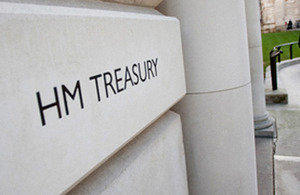- Boost to 4G mobile coverage will see 74% of Scotland covered by all four mobile operators
- 91% of Scottish landmass will be in range of a 4G signal thanks to £1 billion UK Government deal
- Highlands and Islands to see largest 4G boost out of all UK regions with coverage from all four operators increasing from 26% to 68%
People in rural Scotland will enjoy the biggest uplifts in mobile coverage under the UK government’s world-first £1 billion programme to level up digital connectivity across the UK.
The Shared Rural Network (SRN) will see EE, O2, Three and Vodafone build and upgrade phone masts to end so-called partial not-spots: areas where only some, but not all, mobile network operators (MNOs) provide 4G coverage. These not spots mean local people cannot connect unless they are signed up with a provider who has coverage in the area.
This scheme is a major part of the government’s plan to level up all parts of the UK and will bring economic and social benefits for people no matter where they live.
It will help those who live and work in rural communities enjoy the benefits of improved connectivity and seize the benefits of technology, such as using a 4G phone signal for work video calls as well as shopping and streaming TV shows online on the go.
New maps and figures published today show Scotland will benefit the most from the SRN. Coverage from all four MNOs to be delivered to three quarters (74 per cent) of Scotland’s landmass. This is an increase of a third and up from 42 per cent currently.
The deal will see 4G coverage from at least one operator reach more than 91 per cent of every electoral region in Scotland.
The Highlands and Islands will see the largest uptick in coverage with a 42 per cent rise in areas with coverage from all four operators – the largest increase seen anywhere in the UK and bringing coverage from all four MNOs to 68 per cent. 4G coverage from at least one MNO will reach 91 per cent of the region’s landmass.
Regions with higher proportions of rural areas benefit the most. Areas with coverage from all four operators will dial up by 26 per cent in South Scotland, 23 per cent in West Scotland and 20 per cent in North East Scotland.
UK Government Digital Infrastructure Minister Matt Warman said:
In today’s interconnected world, access to fast and reliable mobile coverage is not a privilege but a necessity, so I am delighted that our plans will bring a huge uplift in connectivity to many rural areas in Scotland.
This will bring new opportunities to work remotely, improve people’s ability to stay in touch with family and friends, and stream entertainment on the go.
Once the network is built, no government will have done more to amplify 4G coverage in Scotland. It demonstrates loud and clear how our plan to build back better is delivering for every part of the UK, no matter how rural or isolated.
UK Government Minister for Scotland Iain Stewart said:
From Dumfries and Galloway to the Highlands, and from Skye to Shetland, this UK Government investment will improve access to fast, reliable 4G coverage for people in every corner of Scotland.
The UK Government is working hard to level up digital connectivity, ensuring that people and businesses right across the country can enjoy the social and economic benefits of next-generation broadband and mobile coverage.
The SRN, brokered by ministers in March last year, will bring an additional 280,000 premises and an additional 16,000 km of UK roads in range of a 4G signal – increasing total geographic 4G coverage to 95 per cent of the UK by 2025.
This year the SRN programme has also kicked off work to end ‘total not spots’ – areas which have no coverage from any operator. It has begun searching for, acquiring and building publicly funded masts to be shared between all four MNOs.
The UK Government has today launched a consultation with the telecoms industry to identify any existing infrastructure which can be utilised to end total not spots. It wants to reduce the need to build new phone masts and help make sure public funds are used effectively.
The focus of the consultation is in Scotland where the majority of coverage improvements will take place and which will need significantly more infrastructure compared to other home nations.
In a further boost to connectivity in Scotland, the Scottish Government has confirmed it can continue to provide up to £5,000 extra funding to top-up the Gigabit Broadband Voucher Scheme. This is in addition to the £1,500 available to rural homes and £3,500 available to rural small to medium-sized businesses.
The UK Government continues to actively work with the Scottish Government on gigabit deployment through their Reaching 100% (R100) programme. The scope of the final R100 contract will be confirmed in the Summer.

